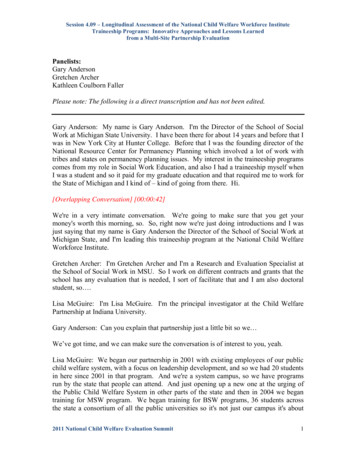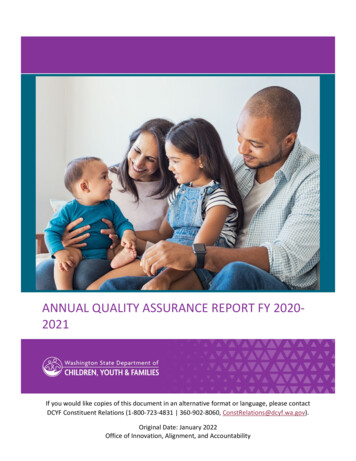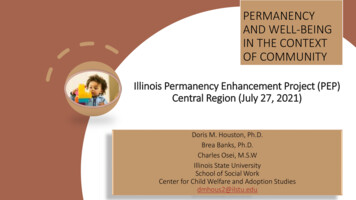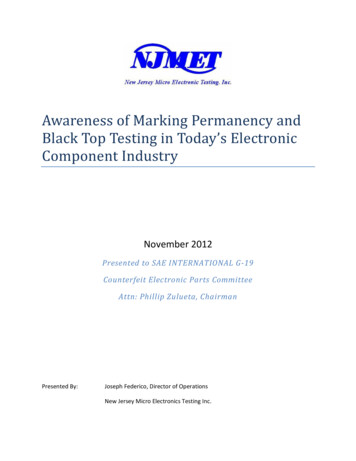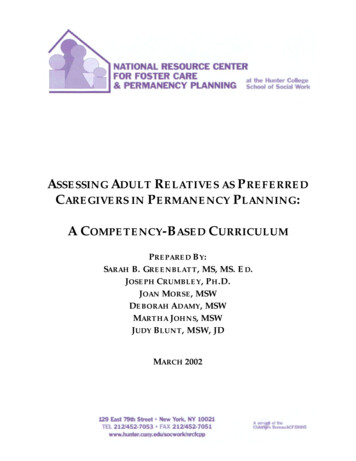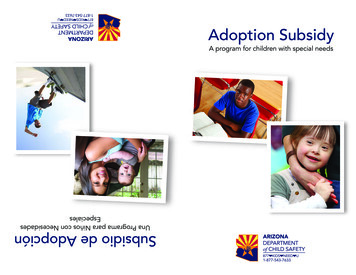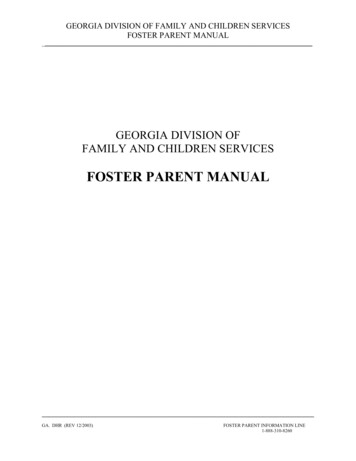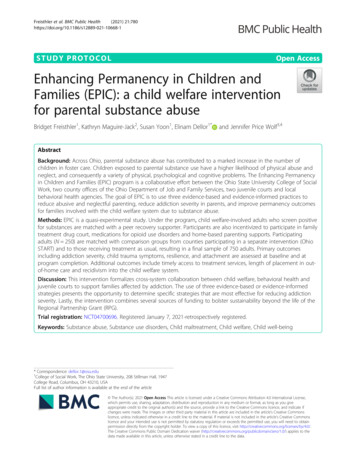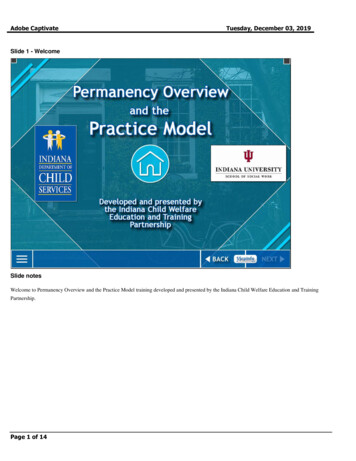
Transcription
Adobe CaptivateTuesday, December 03, 2019Slide 1 - WelcomeSlide notesWelcome to Permanency Overview and the Practice Model training developed and presented by the Indiana Child Welfare Education and TrainingPartnership.Page 1 of 14
Adobe CaptivateTuesday, December 03, 2019Slide 2 - CompetenciesSlide notesIn this training, we will address the important issue of permanency. By the end of the training, you will be able to: Define permanency according to theindiana department of child services’ definition of the term. Recognize DCS philosophy and values regarding permanency. Identify how the Adoptionand Safe families Act of 1997 promotes permanency. And demonstrate how permanency is supported through the Practice Model.Page 2 of 14
Adobe CaptivateTuesday, December 03, 2019Slide 3 - What is PermanencySlide notesAccording to the Indiana Department of Child Services, permanency is providing every child with a safe, stable, and secure home and family forever.Page 3 of 14
Adobe CaptivateTuesday, December 03, 2019Slide 4 - Permanency Philosophy and ValuesSlide notesIt is important for every child to maintain at a minimum one permanent connection with one caring and committed adult who will provide them withguidance and support as they make their way into adulthood. Whatever the permanency arrangement, children must have the opportunity to maintaincontact, as appropriate, with people who are most important to them, especially siblings.DCS emphasizes the importance for all children to have a permanency family and home. With support, DCS believes that every child can have anddeserves a permanency family and lifelong family relationships.Page 4 of 14
Adobe CaptivateTuesday, December 03, 2019Slide 5 - Permanency Philosophy and Values 2Slide notesChildren have the right to know about family members, and conversely family members have the right to know about children. Siblings are critical to achild’s sense of permanency, and as a result FCMs must: place siblings together whenever possible, and coordinate visitations when children are inseparate homes as a means to support and facilitate the continuation of sibling relationships.Page 5 of 14
Adobe CaptivateTuesday, December 03, 2019Slide 6 - Permanency Philosophies and Values 3Slide notesFinding permanency is child centered. This means that children should be involved and updated on the progress of their permanency plans on a regularbasis. This also means that children should have a child and family team to help them find a permanency family. These teams may be comprised ofbiological parents, siblings, extended family, or anyone else that the child feels a strong connection to. It is also important to consider the child’s ethnicand or cultural background, beliefs and worship practices, school, pets, and languages spoken when making permanency plans.Page 6 of 14
Adobe CaptivateTuesday, December 03, 2019Slide 7 - Four Elements of PermanencySlide notesTo achieve permanency, there are four elements which FCMs should take special care to address.Physical permanency refers to a safe and stable living environment.Emotional and relational permanency refers to primary attachments, family, and other significant relationships that offer trust and an exchange of mutualfeelings.Legal Permanency refers to the rights and benefits of a secure legal and social family status.Cultural permanency refers to a continuous connection to family, tradition, race, ethnicity, culture, language, religion, and other related factors.Page 7 of 14
Adobe CaptivateTuesday, December 03, 2019Slide 8 - What is Legal PermanencySlide notesOf the previously discussed categories of permanency, legal permanency can sometimes be the most difficult to understand. We think of and measurelegal permanency as reunification, adoption, legal guardianship, placement with a fit and willing relative, or another planned permanent livingarrangement.Reunification of the child with their family is the preferred permanency option whenever that can be safely achieved. When reunification is notappropriate, adoption is viewed as providing the greatest degree of permanence.Page 8 of 14
Adobe CaptivateTuesday, December 03, 2019Slide 9 - ASFASlide notesThe adoption and Safe Families act was enacted in 1997 which shifted philosophies towards childrens’ health and safety concerns and away fromreuniting children without regard to prior abuse or neglect. ASFA dictates the intensive in home services that must be provided to keep children in theirown homes and prevent removal. Resource care is viewed as a temporary service for children and their families. The ASFA also dictates the frequencywith which DCS must participate in permanency hearings. Click the DCS button at the bottom right of your screen to view DCS Policy chapter 6.11 formore on Permanency HearingsPage 9 of 14
Adobe CaptivateTuesday, December 03, 2019Slide 10 - Practice ModelSlide notesPermanency is also supported by the practice skills: teaming, engaging, assessing, planning, and intervening. Teaming helps families identify a child andfamily team. Engaging skills allow the FCM to identify underlying needs among other bits of information. Assessment skills help ensure child safety.Planning skills help FCMs work with families to tailor plans according to strengths and needs. And intervening skills can help FCMs better understandhow well the current case plan addresses a child’s permanency needs.Page 10 of 14
Adobe CaptivateTuesday, December 03, 2019Slide 13 - CreditsSlide notesThank you for completing part two of AFCARS training, developed and presented by the Indiana Child Welfare Education and Training Partnership.This computer-aided training was developed by Jerry Gordon, Instructional Technology Developer for the IU School of Social Work, with specialassistance from Lori Dickison, Business Systems Consultant for the Department of Child Services.Page 13 of 14
Adobe CaptivateSlide 14 - FiguresSlide notesPage 14 of 14Tuesday, December 03, 2019
Adobe Captivate Tuesday, December 03, 2019 Page 2 of 14 Slide 2 - Competencies Slide notes In this training, we will address the important issue of permanency. By the end of the training, you will be able to: Define permanency according to the indiana department of child services' definition of the term.

